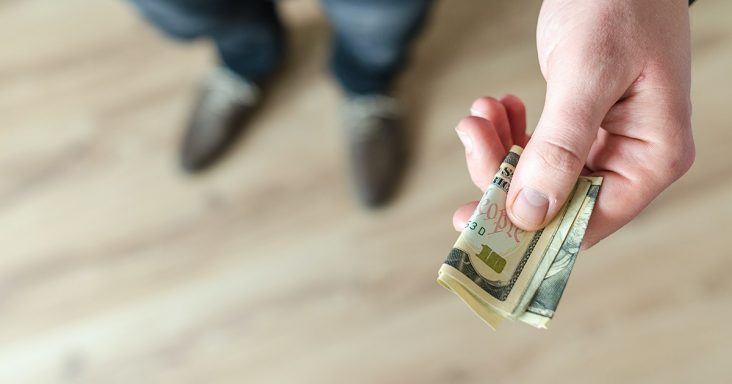Americans continue impulse spending, services spending expected to rise
by May 13, 2021 10:18 am 1,489 views

As consumers continue to spend more time at home, their impulse purchasing has not slowed. They are spending on average $276 per month, up 51% from a year ago, according to a recent survey from social shopping platform Slickdeals.
The Slickdeals survey found the average American will impulsively spend more than $2,100 this year, up 18% from before COVID-19. In January 2020, the average American impulse spend was $155.03 per month, and by April 2020 the monthly impulse spend increased to $183.
The survey found that 72% of respondents said buying something impulsively during the pandemic has positively affected their mood. Post pandemic, one in five said they impulse spend on treats for themselves and 22% said clothing is what they are likely to buy. The respondents agreed most of their impulse buys happen on smartphones while laying in bed.
“In these uncertain times, consumers are looking to stretch their dollars even further, and impulse purchasing can actually serve as a tool to do so,” said Slickdeals CEO Josh Meyers.
He said impulse spending does not necessarily mean consumers are blowing through the paychecks on random luxury items. The survey found more than half said they save money by impulse shopping for household items they are going to need.
“While someone may not plan to buy laundry detergent or groceries on a given day, stocking up on these everyday items when there’s a great deal available can help your budget. As such, impulse spending can be associated with saving money in the long-run as opposed to being wasteful,” he added.

Slickdeals also notes impulse spending is down from $450 a month in 2018, and 71% said they will continue to shop online impulsively after they return to their workplaces. The survey also found since the pandemic began, 46% say they’ve ordered online groceries for the first time, with 47% trying a new streaming service and 35% being a first-time customer with a restaurant delivery app.
The survey found COVID-19 changed what people purchased on impulse. In 2020, the top 5 impulse buys were cleaning supplies (42%) hand sanitizer (38%), toilet paper (35%), hand soap (32%) and canned food (31%). The most popular impulse buys were health related followed by essential clothing and household items. Before the pandemic 50% of impulse buys online were food, 43% clothing, 41% vehicles, 35% household items, 31% coffee, 22% books, 22% takeout and 21% each for toys and shoes.
Economists with Wells Fargo Securities expect to see another shift in consumer spending away from goods into services. Fueled by stimulus, the analysts said a seismic shift in spending on services is around the corner. They also see continued growth for durable goods spending even though some big-ticket-item purchases have been pulled forward.
“With the public health situation improving and the economy continuing to gradually reopen, households are preparing to direct consumption toward services. We expect the sizable pickup in services spending to be the primary driver of consumer spending in the second half of the year, though that need not come at the expense of a complete collapse in goods spending,” said Sarah House, U.S. economist at Wells Fargo.
She said with households sitting on a pile of savings and pent up demand, 2021 could be one of the best years for economic growth in more than a half century. She said the biggest driver of consumer activity over the next few quarters will be the relaxation of social distancing restrictions and reopening of the services economy.
